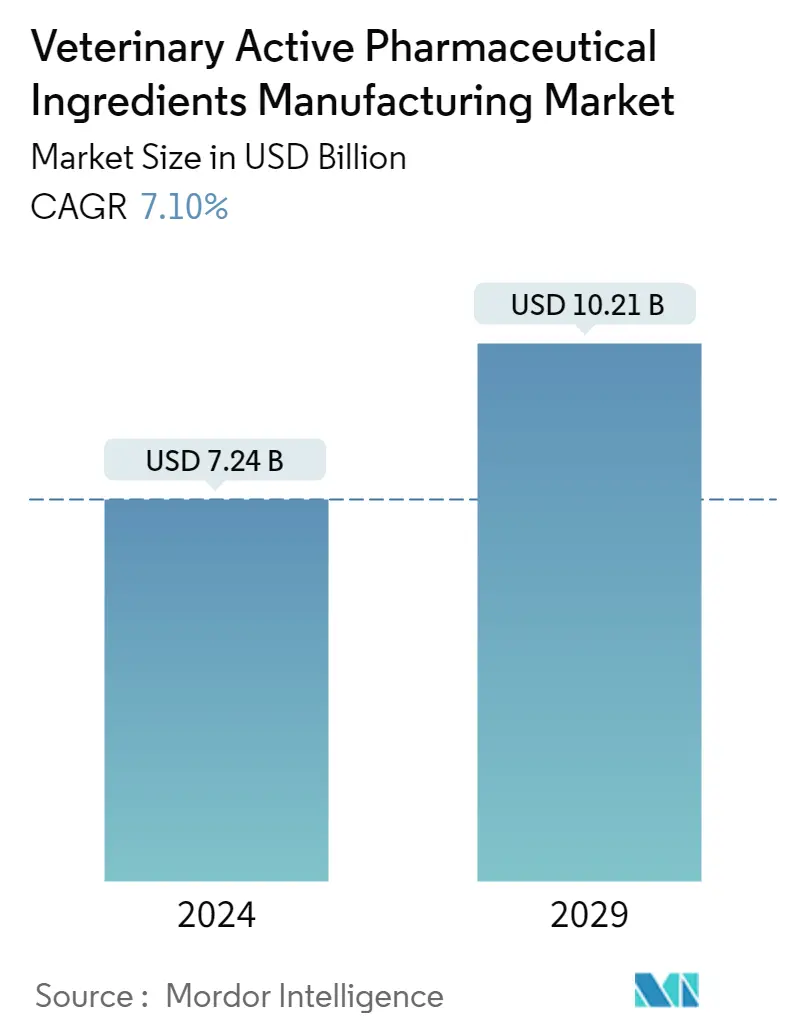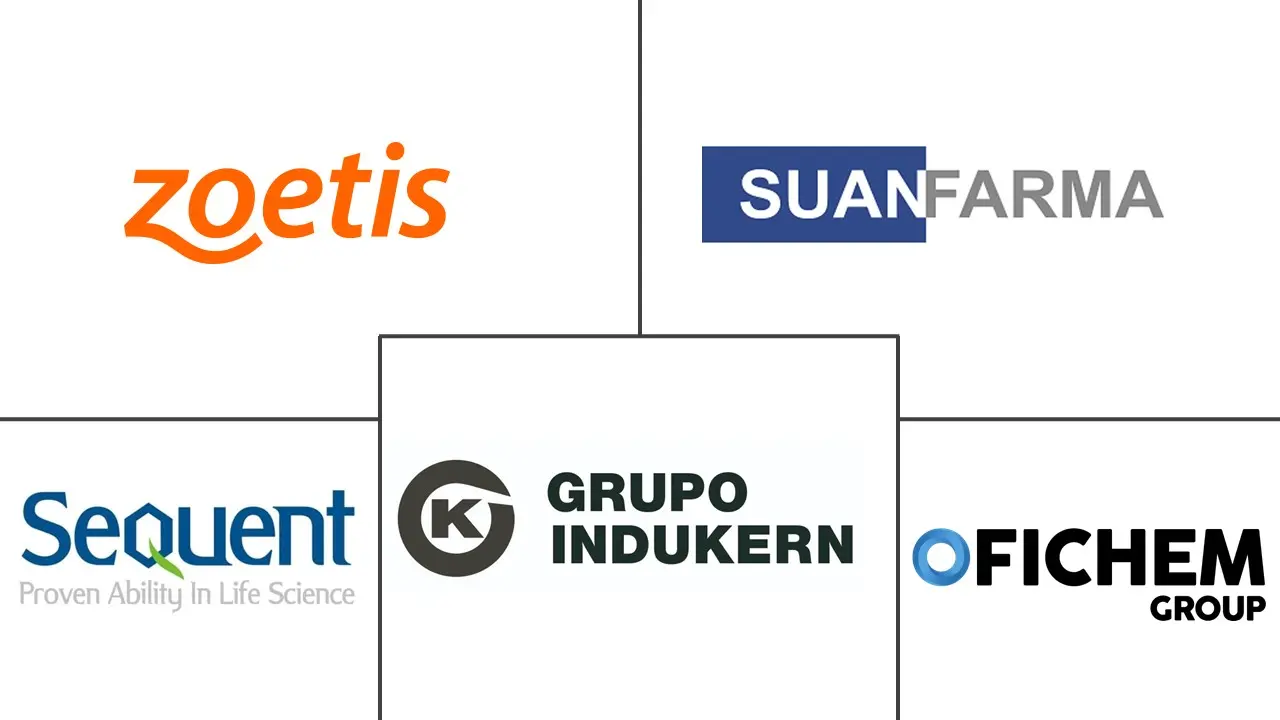Market Size of Veterinary Active Pharmaceutical Ingredients Manufacturing Industry

| Study Period | 2019 - 2029 |
| Market Size (2024) | USD 7.24 Billion |
| Market Size (2029) | USD 10.21 Billion |
| CAGR (2024 - 2029) | 7.10 % |
| Fastest Growing Market | Asia-Pacific |
| Largest Market | North America |
Major Players
*Disclaimer: Major Players sorted in no particular order |
Need a report that reflects how COVID-19 has impacted this market and its growth?
Veterinary Active Pharmaceutical Ingredients (API) Market Analysis
The Veterinary Active Pharmaceutical Ingredients Manufacturing Market size is estimated at USD 7.24 billion in 2024, and is expected to reach USD 10.21 billion by 2029, growing at a CAGR of 7.10% during the forecast period (2024-2029).
The COVID-19 epidemic has had a significant impact on the market. Several animals, including cats, gorillas, dogs, farmed mink, otters, and others, were infected with the virus, which resulted in an increased risk of viral spread among domesticated animals, in turn boosting the demand for veterinary drugs. However, amid the pandemic, the prices of some veterinary APIs and feed additives rose sharply. According to a publication by Hangzhou DE Mark Industrial Co. Ltd., a manufacturer of veterinary pharmaceutical raw materials and specialty feed additives, in January 2022, the price of vitamin C grew dramatically, reaching roughly 30 RMB (USD 4.19) per kg, an almost 50% increase. While the cost of Vitamin D3 nearly doubled. Thus, such an increase associated with the prices of veterinary manufacturing products adversely impacted the market's growth during the pandemic. However, increasing incidences of COVID-19 among animals have surged the demand for several drugs to combat the SARS-CoV-2 virus, which is anticipated to have a positive impact on the market's growth. For instance, as per CDC and NCEZID data published in March 2022, more than 200 pets, including dogs, ferrets, and cats, were infected by the SARS-CoV-2 virus in the United States. Therefore, as per the analysis, such incidences are projected to augment market growth over the coming years.
The factors expected to drive the market growth include the increasing prevalence of zoonotic diseases, increasing animal populations and pet ownership, and rising numbers of veterinarians and veterinary visits. The market is highly propelled by the elevated prevalence of zoonotic diseases. Since human-animal connections are necessary for existence, this makes zoonoses easier to spread. Human-animal cohabitation is more common in poorer nations, particularly among rural populations. This inextricable relationship is evidenced by the higher occurrence of zoonoses in underdeveloped countries.
For instance, the Indian Journal of Medical Research in 2021 stated that animals are responsible for 70% of emerging infectious diseases; every year, five new diseases are generated, three of which are of animal origin, and zoonotic infections account for 80% of agents with potential bioterrorism use. In May 2022, the USDA Animal and Plant Health Inspection Service (APHIS) and the New Jersey Department of Agriculture (NJDA) confirmed New Jersey's first highly pathogenic avian influenza case in a Monmouth County non-commercial backyard poultry flock. As a result of the increasing prevalence of infectious diseases, there is a greater need for effective treatment options, which increases the demand for active pharmaceutical ingredient manufacturing and supports market growth.
Moreover, the increasing pet population and pet adoption are expected to propel the market's growth. For instance, according to the People's Dispensary for Sick Animals (PDSA) PAW Report 2021, there were 9.6 million pet dogs, 10.7 million pet cats, and 900,000 pet rabbits in the United Kingdom. The same source also reported 2 million pets being adopted since March 2020 in the United Kingdom. The pet population is susceptible to several diseases, and thus, increased adoption of this population is expected to raise demand for veterinary drugs, ultimately boosting the market's growth.
Various strategies adopted by the key market players, such as product launches, mergers, and acquisitions, are expected to boost the market over the forecast period. For instance, in November 2021, ArchiMed acquired the majority of its stake in Madrid-based SuanPharma, a provider of veterinary active pharmaceutical ingredients. The goal was to finance ambitious industrial consolidation and organic expansion to position it as a leader in the API industry.
Thus, all the above-mentioned factors, such as the growing prevalence of zoonotic diseases and the rising adoption of animals, are expected to boost market growth over the forecast period. However, lack of awareness and the high cost of animal care coupled with stringent regulations may restrain the market over the forecast period.
